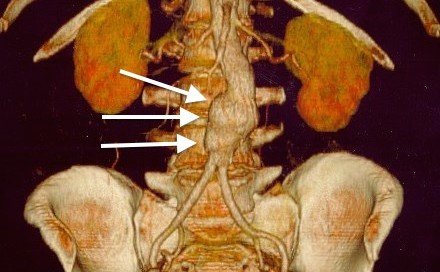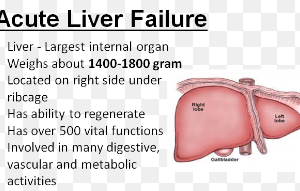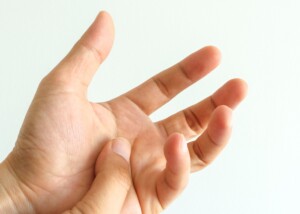How High Blood Pressure Causes Headaches and Aneurysms
![]()
High blood pressure, not just brain tumors and sinus infections, can cause headaches.
Hypertension can also cause an aneurysm in the brain – a bulging blood vessel that can burst and cause life-threatening bleeding.
First off, high blood pressure (hypertension) is often referred to as the “silent killer.”
Typically it does not cause symptoms. Typically. That’s the key word.
This is why everyone should regularly get their BP measured with a home device in addition to at a medical clinic.
There is no such thing as, “I can’t have high blood pressure because I feel fine.”
High Blood Pressure and Headaches
Now, in occasional cases, high BP can cause symptoms.
“When blood pressure is elevated, it can often cause a flushed face as well as a headache,” says Walter Gaman, MD, FABFM, board certified in family medicine and the author of several award-winning books including “Age to Perfection: How to Thrive to 100, Happy, Healthy, and Wise.”
“While the American Heart Association takes the stance that high blood pressure does not cause headaches, some scientists and physicians around the world disagree.
“When the heart is working too hard it causes the pressure within the blood vessels to increase.
“The top number, the systolic, represents the heart at work, while the bottom number, the diastolic, represents the heart at rest.
“When someone develops high blood pressure it can increase the pressure of the vessels around the skull.
“Those vessels then begin a processes called autoregulation. In some studies, autoregulation can reduce headaches, specifically if the blood pressure was mostly a systolic elevation.
“However, for people with high blood pressure who develop significant headaches, their body may not be regulating the vessels around the brain, thus causing pressure.
“For those people, headaches may be the first sign of high blood pressure.”

Shutterstock/wavebreakmedia
If you’ve been experiencing bad headaches lately, they are most likely of benign origin such as muscle tension, stress or a sinus issue. Even a tight ponytail can cause a headache.
Brain tumors are uncommon causes of headache. Hypertension, too, is not a common cause, but it’s more likely the culprit than is a brain tumor.
Nevertheless, high BP is a heavyweight in the department of potentially life-threatening conditions.
High Blood Pressure and Brain Aneurysm
“Someone with untreated hypertension can be at risk for a cerebral aneurysm,” says Dr. Gaman.
“This is especially true if they also have a history of smoking cigarettes. The uncontrolled hypertension puts pressure on the blood vessel, causing it to become weak.
“Much like a balloon that has been stretched with inflation, deflated and inflated again. Over time, this causes the balloon to lose elasticity.
“The arteries are the same way, becoming weak when over-stretched. If an artery then bursts, it can create a hemorrhage, where blood leaks out into the brain.

Shutterstock/Blamb
“This is a life-threatening condition. This is one of the reasons that controlling high blood pressure is so important.”
This condition is also called a hemorrhagic stroke. For many who survive this event, they suffer permanent brain damage (depending on which area of the brain got soaked with blood).
Usually, an unruptured cerebral aneurysm does not cause symptoms. However, there are cases in which for a few weeks prior to the rupture, the patient began experiencing headaches.
Beware of this Symptom Triad
A classic symptom trio is highly suspicious for a brain aneurysm:
• Headache
• One eyelid drooping
• Pupils of noticeably unequal size
There may also be double vision. If you’re having any of these symptoms along with a headache, you should be driven to the emergency room.
Though headaches as solitary symptoms normally don’t mean anything sinister, the game changes when the other symptoms are present. Get to the ER!
Avoiding Hypertension
To keep your blood pressure from getting high, here is what you must do.
Quit smoking, increase your consumption of fresh produce, lower your consumption of processed and high sodium foods, maintain a healthy body weight, and do cardio and strength training workouts.

Dr. Gaman is with Executive Medicine of Texas and is with the Staying Young Radio Show 2.0 podcast.
 Lorra Garrick has been covering medical, fitness and cybersecurity topics for many years, having written thousands of articles for print magazines and websites, including as a ghostwriter. She’s also a former ACE-certified personal trainer.
Lorra Garrick has been covering medical, fitness and cybersecurity topics for many years, having written thousands of articles for print magazines and websites, including as a ghostwriter. She’s also a former ACE-certified personal trainer.
.
Top image: Shutterstock/Rawpixel.com
Can You Get a Blood Clot or DVT in a Finger?

Are you worried you have a blood clot or deep vein thrombosis in your finger?
This question pertains to the finger itself, rather than a bruise under the nail from bleeding.
You probably already know a little something about deep vein thromboses, particularly that they can break off, travel to the lungs and cut off airflow.
Though every DVT is a blood clot, not all blood clots are a DVT.
“Most blood clots in the fingers are caused by trauma to the area,” says J. Mark Anderson, MD, DABFM, of Executive Medicine of Texas and who is board certified in family medicine.
“This is will not lead to DVT. DVT, by definition, is a deep vein thrombosis.
“Deep veins, like those found in the arms or legs, are much larger than those found in the fingers and toes.
“If a clot in the finger does not go away on its own and becomes more painful, see a doctor to have it drained.
“DO NOT DRAIN YOURSELF.”
A blood clot in a finger, then, is not deep, and hence, is not a deep vein thrombosis.
It also cannot travel to the lungs.
“Blood clots in either the hand or arm can cause weakness, tingling, numbness and coldness in the hands and fingers,” says Dr. Anderson.
“It can also lead to blue coloring of the skin.”
A blood clot in the neck can significantly swell up an arm, making it seem as though the blood clot is in the arm itself somewhere. The fingers may look like sausages.
But a blood clot in just a finger will not swell anything up.
“An upper extremity DVT can form in the upper arm, but not in the finger,” says Dr. Anderson.
“An extremity blood clot can put a person at risk for a pulmonary embolism.”

Dr. Anderson is coauthor of the award-winning book, “Stay Young: 10 Proven Steps to Ultimate Health,” and host of the nationally syndicated Staying Young Show which goes to podcast as Staying Young Show 2.0.
 Lorra Garrick has been covering medical, fitness and cybersecurity topics for many years, having written thousands of articles for print magazines and websites, including as a ghostwriter. She’s also a former ACE-certified personal trainer.
Lorra Garrick has been covering medical, fitness and cybersecurity topics for many years, having written thousands of articles for print magazines and websites, including as a ghostwriter. She’s also a former ACE-certified personal trainer.
.
Top image: Shutterstock/Image Point Fr
Does One Calf Muscle Smaller than the Other Mean Atrophy?
Those who fear having ALS may notice that one calf has less muscle than the other and worry this means atrophy and the beginning of a fatal journey.
Helping Autistic Children With Incontinence Adjust to School

Returning to school can be a source of stress and anxiety for autistic children, as their relaxing summer schedule suddenly changes.
Best Breast Cancer Defense Is Early Detection: Honoring National Mammography Day
For more than three decades, National Breast Cancer Awareness Month (BCAM) has propelled public education on the causes and risks of breast cancer, the importance of early screening and diagnosis, and the growing number of treatment options available today. (more…)
Can Mental Stress Make Chronic Heart Failure Worse?

Chronic heart failure in the elderly has a poor prognosis, but is this made worse if one is subjected to chronic stress vs. if they weren’t?
We surely know that chronic stress can contribute to the development of coronary artery disease.
You may also know that coronary artery disease is a risk factor or can lead to chronic heart failure.
However, what about a direct causal relationship between anxiety or stress, and a worsening of a pre-existing longstanding heart failure?
Another intriguing point to consider is the effect of a new-onset, deeper level of chronic stress on chronic heart failure that’s already been in the severe range.
An analogy might be this: How damaging can jumping with a knee – that’s already been mangled through-and-through from a ski accident – actually be?
In other words, the knee is so shredded that it couldn’t get any worse even if the patient began jumping.
What Exactly Is Chronic Heart Failure?
• An ongoing situation in which the heart does not pump enough blood with each beat for optimal oxygenation of the body.
• The heart’s “squeezing” is weak. Each beat ejects an inadequate amount of blood. The lower the left ventricular ejection fraction, the less blood that is pumped out. This is systolic heart failure.
• However, in diastolic heart failure, the pumping action is okay, but the heart does not fill with enough blood to be pumped out.
The net result, then, is an insufficient amount of blood being pumped out.
Can a person’s longstanding heart failure be bad enough such that new stress in their life would have no effect, just like jumping on a destroyed knee joint would not make it any worse because it’s so damaged already?
“This is a challenging question to answer with great certainty,” begins George Ruiz, MD, former chief of cardiology at MedStar Union Memorial and MedStar Good Samaritan Hospitals, with expertise in the care of adults with advanced heart failure, pulmonary hypertension, congenital heart disease and heart disease during pregnancy.
Dr. Ruiz explains, “I think it’s more helpful to understand how the mind and the heart impact each other.
“Heart failure often impacts a patient’s ability to meet their daily demands – this can lead to escalating mental health issues which we know can adversely impact prognosis.
“Providers of care often overlook mental health issues in CHF patients. Treating these issues can improve patients’ quality of life, which is super important for both patients and their families.
“Regular health maintenance can also have an impact – a focus on diet, sleep habits, avoidance of alcohol and other depressants can also improve patient’s overall well-being.
“Heart failure impacts all aspects of a patient’s life. Therefore, it would not be far-fetched that improving mental health would also improve the body’s resilience and ability to cope with CHF.”
Baseline Mental Stress vs. Worsening Mental Stress
The patient may have always been a worry wart of sorts, rather than the type who has a “mellow as a clam” disposition.
So the variable then becomes a new situation in their life that intensifies their baseline stress and anxiety levels.
There are no conclusive studies that can quantitate a causal relationship between the worsening of chronic heart failure with additional mental stress or anxiety in the person’s life (e.g., losing home to foreclosure; just learned grandchild is dying from cancer; adult child with two preschoolers loses job/evicted from apartment and moves into the patient’s home).
The inconclusive nature is especially true with subsets of longstanding heart failure, such as stage 4 disease, or in patients over 80, or in patients who do very little exercise.
 Dr. Ruiz has also treated patients with congenital heart disease and heart disease during pregnancy. From 2006 to 2007 he served as a White House Fellow and was a special assistant to the Secretary of Veteran Affairs.
Dr. Ruiz has also treated patients with congenital heart disease and heart disease during pregnancy. From 2006 to 2007 he served as a White House Fellow and was a special assistant to the Secretary of Veteran Affairs.
 Lorra Garrick has been covering medical, fitness and cybersecurity topics for many years, having written thousands of articles for print magazines and websites, including as a ghostwriter. She’s also a former ACE-certified personal trainer.
Lorra Garrick has been covering medical, fitness and cybersecurity topics for many years, having written thousands of articles for print magazines and websites, including as a ghostwriter. She’s also a former ACE-certified personal trainer.
Ultrasound Shows Blood in a Breast Cyst: Cancer or Benign?

What does it mean when an ultrasound shows blood in a breast cyst? Is this likely cancer or more likely a benign finding?
What prompts women to have an ultrasound of their breasts in the first place, since ultrasound is not a standard screening tool for breast cancer?
• She or her doctor have discovered a palpable lump (i.e.. via fingertips), and the ultrasound is ordered for further investigation.
• She wants a supplemental ultrasound for breast cancer screening after learning that she has dense breast tissue.
• She wants the ultrasound for supplemental screening due to a genetically high risk of breast cancer.
The ultrasound can pick up a cyst in a breast. The patient may already know that when a mass is detected on an ultrasound, the technician will then run a test to see if the mass has a vascular network, since tumors do have their own vascular supply.
Absence of a blood supply to the mass is a reassuring sign. Hence, when the patient learns that there is actual blood in a cyst, this brings on fear.
How Likely Does Blood in a Breast Cyst Indicate Cancer?
“Not typically; usually breast cancer has a solid appearance on ultrasound, while cysts or hematomas have fluid or blood,” says Mark Levandovsky, MD, Founder and Medical Director of Preventive Medicine and Cancer Care. Dr. Levandovsky is a board certified internist and oncologist/hematologist in practice for 20 years.
Dr. Levandovsky continues, “So seeing blood inside a cyst is more likely to be due to bleeding into the cyst than cancer.”
This is not the same as a blood supply TO the cyst (also known as angiogenesis).
Breast Cancer: Four Points You Must Know

Shutterstock/Billion Photos
• Speak to your doctor about the best screening protocol for your age and medical history.
• Yearly mammograms never replace monthly self-exams.
• A 3D mammogram (tomosynthesis) is more sensitive to detecting cancer than is a 2D mammogram, but a biopsy is always required for an official diagnosis.
• A cyst is not a forerunner to breast cancer.

Dr. Levandovsky provides personalized care to health conscious individuals as well as cancer patients and survivors, focusing on an integration of genetic/molecular risk assessments, prevention, education, nutrition and psycho-oncology.
 Lorra Garrick has been covering medical, fitness and cybersecurity topics for many years, having written thousands of articles for print magazines and websites, including as a ghostwriter. She’s also a former ACE-certified personal trainer.
Lorra Garrick has been covering medical, fitness and cybersecurity topics for many years, having written thousands of articles for print magazines and websites, including as a ghostwriter. She’s also a former ACE-certified personal trainer.
.
Top image: ©Lorra Garrick
Can GERD Cause a Brief Pulling Sensation in the Chest?

Do you ever get a brief pulling or tugging feeling in your chest and wonder if this can be caused by GERD or momentary acid reflux?
A variety of sensations can affect the chest.
• Pain (throbbing, sharp, pulsing, continuous)
• Aching
• Tightness
• Pressure or heaviness
• Soreness
• Burning
• Food stuck feeling
• Numbness (e.g., permanent after a mastectomy)
But it doesn’t stop there. Some people do occasionally feel a tugging or pulling sensation. It may occur only once or come on from time to time.
If they’ve already been dealing with a diagnosed GERD, it will be tempting to blame GERD on the odd sensation.
GERD Symptoms that Affect the Chest
“Typical GERD symptoms include heartburn, regurgitation, sour taste in the back of the mouth,” says Dr. Neil Sengupta, MD, a general gastroenterologist and assistant professor at the University of Chicago, and GI Research Foundation Scholars Award Recipient.
There may also be what’s best described as a pain or ache in the chest, particularly behind the sternum (breastbone).
An esophageal spasm, triggered by acid reflux, may also cause pain – which can have a throbbing or pulsing nature.
But tugging? Dr. Sengupta explains, “GERD does not typically cause a ‘tugging or catching’ sensation.
“GERD can atypically lead to chest pain (non-cardiac chest pain). A pulling sensation (assuming there is no swallowing difficulty) is probably not related to a GI cause.”
Possible Causes of a Pulling Tugging Feeling in the Chest Area
• Overworked muscle that’s going into a harmless spasm, though this is likely to also hurt.
• Fatigued muscle that’s twitching. A big twitch will feel like a painless thumping.
• Some other musculoskeletal issue.
• Heart palpitation (“skipped” or “extra” beat).
If this happens on a recurring basis, take note of what you were doing at the moment it happened.
After several occurrences you may see a pattern such as a certain body position or movement with your arms.
Also take note of anything you did the previous day that might be connected, such as a chest workout at the gym or chopping wood.
There are no serious diseases that are associated with a patient reporting a tugging or pulling sensation in their chest.
But take note: A transient ischemic attack (mini stroke) can cause a pulling sensation on one side of the entire body – as though an unseen force is pulling a person to one side, making them feel off-balance or slightly tipping to the side.
A TIA would not cause a solitary symptom of tugging only in the chest area.
So if your experience is accompanied by other concerning symptoms (clumsiness, weakness in a limb or difficulty walking, chest pain, shortness of breath, a faint feeling, dizziness, nausea, sweating) then see a doctor immediately.
 Dr. Sengupta’s research interests involve optimizing the care and outcomes of patients hospitalized with gastrointestinal bleeding. Specific interests include GERD, colon cancer screening and fatty liver disease.
Dr. Sengupta’s research interests involve optimizing the care and outcomes of patients hospitalized with gastrointestinal bleeding. Specific interests include GERD, colon cancer screening and fatty liver disease.
 Lorra Garrick has been covering medical, fitness and cybersecurity topics for many years, having written thousands of articles for print magazines and websites, including as a ghostwriter. She’s also a former ACE-certified personal trainer.
Lorra Garrick has been covering medical, fitness and cybersecurity topics for many years, having written thousands of articles for print magazines and websites, including as a ghostwriter. She’s also a former ACE-certified personal trainer.
.
Top image: Shutterstock/CHAjAMP
Can MS Cause an Arm to Fall Asleep at Night?

You wake in the middle of the night or early morning to find that your arm feels like a lifeless log: numb and asleep. You also have MS and wonder if there’s a connection.
To some individuals, wakening to the dead sensation of an arm that’s “fallen asleep” is unnerving (no pun intended). It’s so numb to the touch that it feels like it belongs to someone else’s body.
This phenomenon can happen to perfectly healthy people when the arm ends up in certain positions that compress nerves. But can multiple sclerosis – an autoimmune disease – also play a role?
The MS Connection to Arms that Fall Asleep at Night?
“People with MS often develop the sensation of pins and needles in their extremities like they are ‘falling asleep,’” says Mitzi J. Williams, MD, clinical neurologist with Morehouse School of Medicine, an MS specialist and clinical advisor for the Multiple Sclerosis Foundation.
“This symptom of nerve dysfunction is called paresthesia and can occur in one or both arms or legs.
“This occurs frequently in several neurologic conditions including MS, diabetic neuropathy and vitamin B12 deficiency.
“With most of these conditions, the tingling can occur at any time throughout the day. With MS, people notice their symptoms are worse at night because they are still and trying to rest.
“However, it is not as common that people with MS actually have the onset of paresthesias at night. This is more common with carpal tunnel syndrome or with sleep positions that compress the peripheral nerves.”
If you’ve been diagnosed with multiple sclerosis and are experiencing a fallen asleep arm at night … it’s very possible that the cause is nothing more than a sleep position.
Or, you just might have carpal tunnel syndrome (which is not related to MS).
Symptoms of Carpal Tunnel Syndrome
• Numbness or tingling in the fingers or hand that’s not always related to sleep position; can happen during the day.
• The pinky is excluded.
• The numbness or tingling may affect the wrist and forearm, and may especially occur while you are holding something or performing repetitive motions like typing.
• The sensation makes you want to “shake out” your hand.
• The hand may be weak.
• There may be wrist pain.
Sleep Time Nerve Compression
Dr. Williams explains, “The arms fall asleep at night because there is increased pressure on the nerves, and this is usually improved with changing positions.”
Next time this happens to you, simply change position (make sure the arm is not pressed up against anything) and just wait it out.
There is no need to shake out the arm or continuously move it to reverse the numbness – unless that feels better.
“If symptoms are due to carpal tunnel syndrome, your doctor can prescribe neutral position wrist splints to decrease the nighttime symptoms.
“If symptoms are severe and not relieved with wrist splinting a surgical procedure may be needed to relieve the symptoms.”
In summary, the issue of an arm or hand falling asleep at night (that’s relieved by change in position) is much more likely to be related to sleep position or carpal tunnel syndrome than multiple sclerosis.

Dr. Williams is author of “MS Made Simple: The Essential Guide to Understanding Your Multiple Sclerosis Diagnosis.” She is a member of the American Academy of Neurology.
 Lorra Garrick has been covering medical, fitness and cybersecurity topics for many years, having written thousands of articles for print magazines and websites, including as a ghostwriter. She’s also a former ACE-certified personal trainer.
Lorra Garrick has been covering medical, fitness and cybersecurity topics for many years, having written thousands of articles for print magazines and websites, including as a ghostwriter. She’s also a former ACE-certified personal trainer.
.











































































